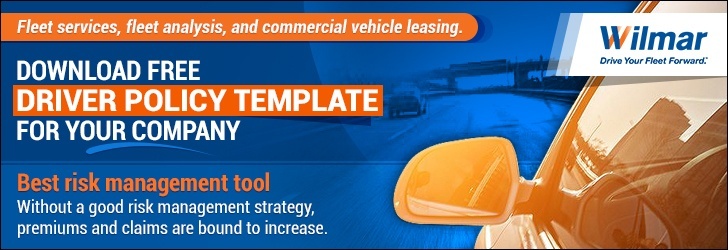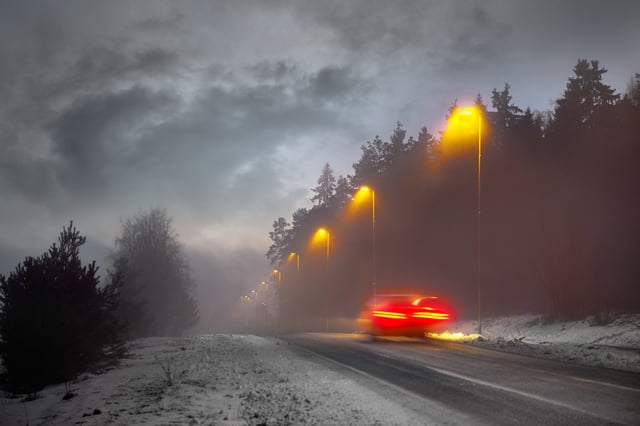
When you tell people that you're a professional driver or that you manage a fleet of service vehicles, almost everyone will assume you mean during the day. This is only fair, night work only makes up about three percent of the workforce, but the vast majority of third shift workers do so in nice, safe, brightly lit environments like gas stations, 24 hour retail, construction.
However, night work takes on an entirely different context when you're on the road trying to make out the next lane change in the semi-darkness while some half-asleep roadtripper in the oncoming lane leaves their bright blaring despite your courteous flash.
Driving at night is dangerous for everyone and more than 40% of car crashes happen after the sun goes down or, even worse, during those terribly gray hours between sunrise and sunset. While the sky may look pretty during these times, your eyes are glued to the road from the time the sun goes down until you're turning in your vehicle.
Any kind of variance in the road condition can be a problem, as can counties that clearly haven't bothered to repaint their roads since the Nixon era.
For both fleet managers and all you night drivers out there providing late-night and often specialty B2B services, we have a handy list of driving safety tips to keep your wheels between the right set of lines and away from the probably-drunk speeding yahoos.
1) Get Plenty of Rest
While everyone is better at their job when fully rested, getting enough sleep can litterally be the difference between whether or not your eyes can focus.
As most night drivers know, being bleary-eyed isn't just how you might feel after waking up, it's a real condition that can put you at risk while behind the wheel. The more good solid sleep you have, including waking up at the right point in your REM cycle, the clearer your eyes will stay.
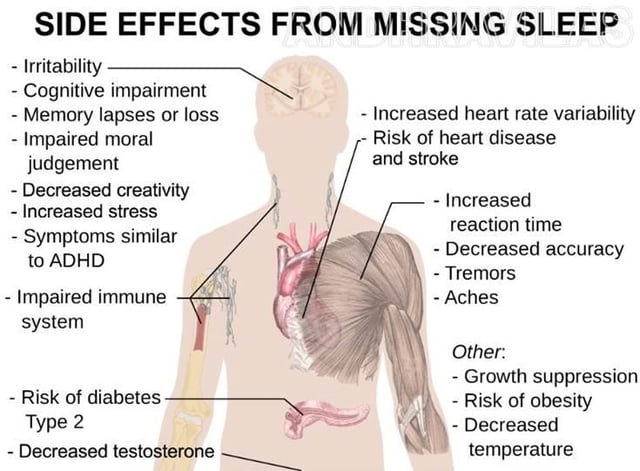
2) See an Optometrist
If you wear glasses or contacts, it is vitally important that you keep your prescription up to date, especially for myopia (nearsightedness). Among the major dangers of night driving is flare, when lights spread out in your vision rather than staying nice tidy points you can look away from.
This is most common in people with under-treated myopia so get your eyes checked once to twice a year. If you don't wear glasses, get your eyes checked once every two or three years to make sure you still don't need them for night driving.
3) Always Watch Your Mirrors
Another big nighttime risk is people driving recklessly. The speeders near town are likely to be drunk and the speeders between town are probably trying to make use of the low police coverage to make ridiculous time to their destination.
Either way, you want to stay well clear of them. Watch your mirrors for fast approaches and be prepared to maneuver if you're dealing with unpredictable behavior or one-lane/passing-lane issues.
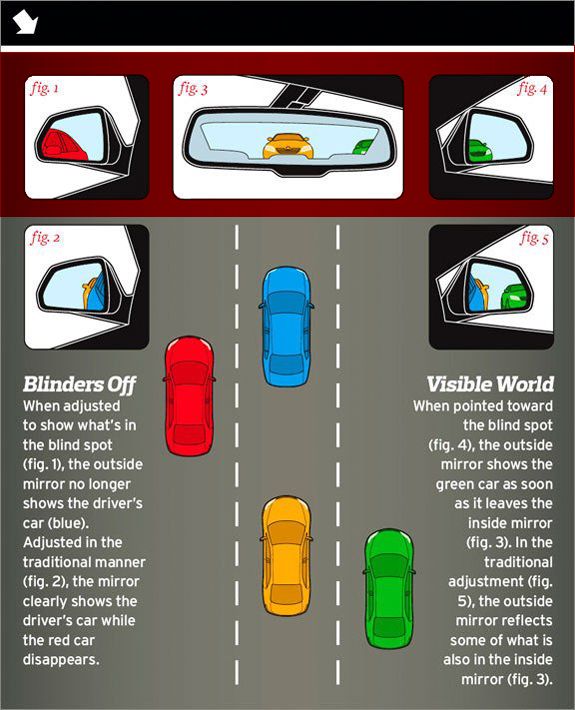
4) Increase Your Follow Distance
It's harder to tell how far away tail lights are at night and people driving in the middle of the night are more likely to drive erratically, including a variance in speed.
Increase your follow distance to five car lengths or more to be sure that if you wind up coming up on someone much faster than they're going, or if someone ahead of you makes an unpredicted move, you'll have time to react.

5) Remember the Brights "Game"
You can learn a lot about someone by whether or not they will turn off their brights for oncoming traffic. If you're between towns with no street lights, always drive with your brights on unless there are tail lights in front of you, headlights in oncoming, or you are passing residences.
Turn on your brights the moment you are in the lead with no oncoming and turn them off the moment you see other vehicle lights. The brights game is a pretty good way to stay alert and courteous. If oncoming doesn't turn off their brights, they are either asleep at the wheel or selfish a-hats.
Tap your brights once to wake the sleepers and if the brights don't go out, turn yours back on to reduce the blinding effect.
6) Maintain Your Night Sight
Finally, one of the most important aspects of night driving is knowing how to maintain your night sight. Never look directly at oncoming headlights, bright or otherwise, or into glowing business or construction lights beside the road.
Instead, keep your eyes focused around the edges of the lights as you look around so that your pupils don't constrict and wreck your night sight.
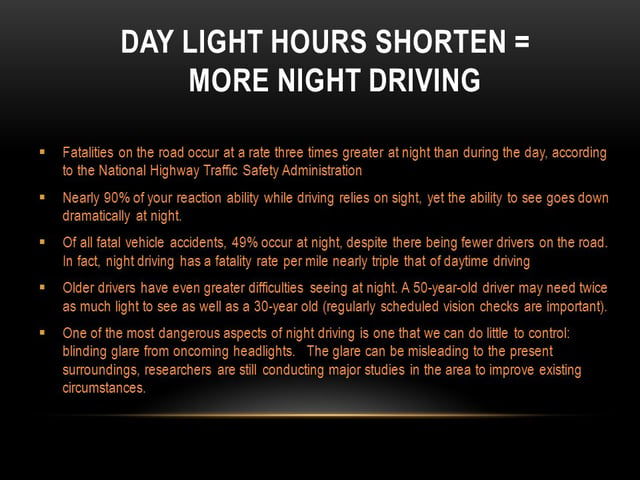
Night driving is, by far, one of the riskiest occupations in modern business but someone's got to do it. If you and your fleet are constantly on the road during the darkest hours of the night, remember these tips and stay safe out there.
For more fleet tips, news, and advice contact us today!





